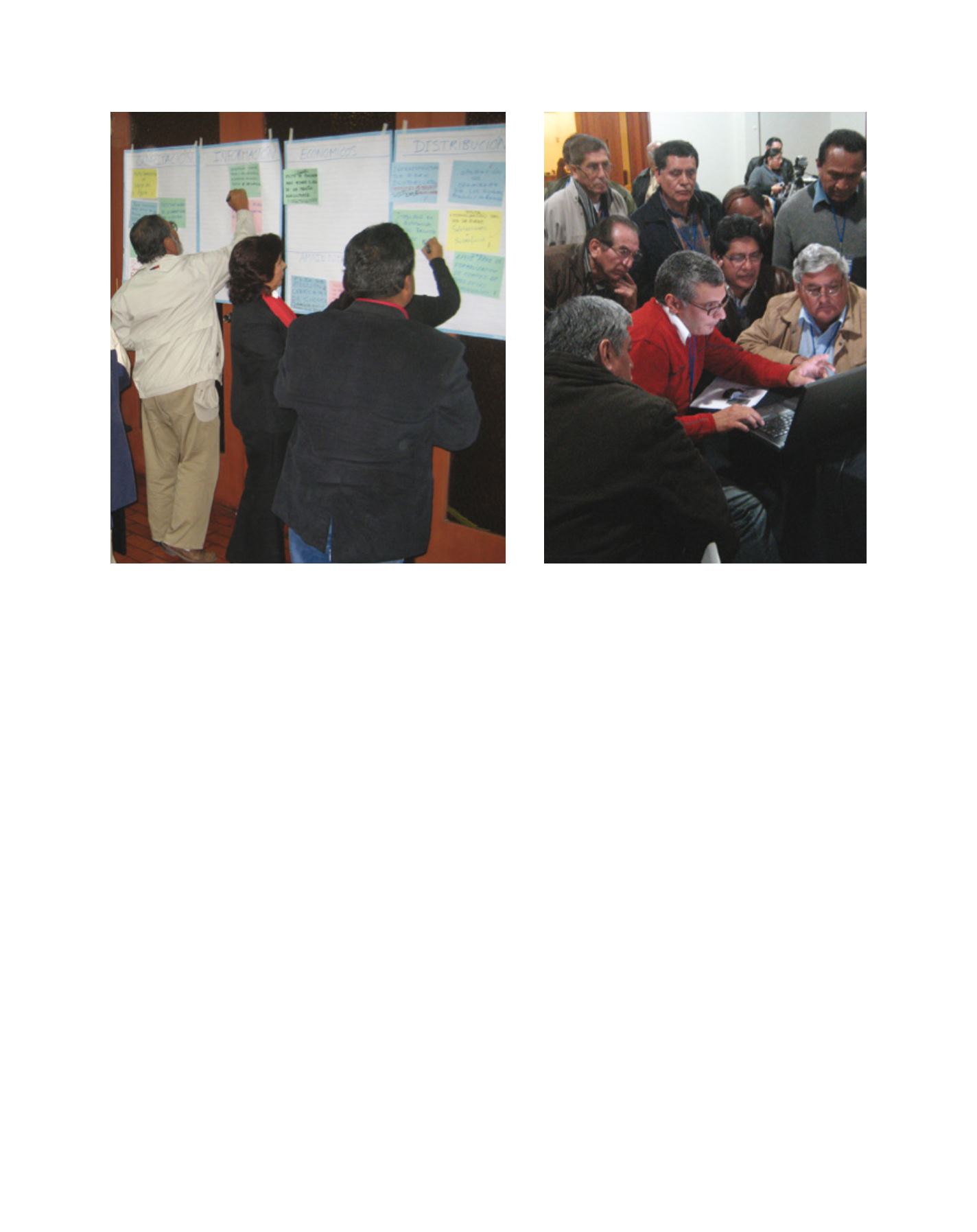

[
] 138
W
ater
E
ducation
and
I
nstitutional
D
evelopment
formulation and technical analysis of alternatives, so that the
needs of participants in the planning process solutions are better
defined and understood, and solutions are developed to meet
them. The collaborative process is structured through ‘circles of
influence’ that define roles, commitments, communication chan-
nels, rules of engagement and, importantly, the two-way flow of
technical information between interest groups, model builders
and analysts. The circles of influence concept enforces a para-
digm shift by placing the model builders at the inner-lowest level,
to be directed by stakeholders and decision makers at the highest.
This is meant to ensure that a decision model is built starting
from the decision objectives that matter, and that complexity
is kept at a minimum to ensure that decisions of interest can be
made by stakeholders and those within the scope of the deci-
sion makers. Uncertain variables are examined first to determine
whether their further understanding would affect the outcome
of a decision. At an ongoing SVP process facilitated by USACE
in the Nam Gam sub-basin of the Mekong River in Thailand, all
modelling is done with Excel because all members of the river
working group have access to it.
The members of level 1 (the model builders), are typically
salaried and have the ability to develop sophisticated analyses
and models of the water resources system of interest. In Peru
the model builders consist of the technical coordinators of the
river basin council, a consultant firm, the president of the river
basin council and the autonomous water authority, which is
a regional office of ANA. In these pilots, leaders of the inter-
est groups represent themes of Peru’s national water strategy
(financing, water quality, risk and climate change, institutions
and culture of water, and water resources benefits)
in level 2 (model validation), to test and help define
the decision metrics, objectives and measures to be
evaluated with respect to the problem statements and
interests of their constituents. These first two groups
meet with high frequency in technical work sessions.
The broad interest groups (level 3) and decision
makers (level 4) meet at lower frequency during
structured workshops to further provide values and
interests, and decision scope (such as consideration
of national or regional strategies, politics and master
plans) respectively. In these Peru pilots, the deci-
sion makers are engaged three times to validate the
progress of the IWRM planning process and to mark
official completion of the state of the basin (‘what do
we have?’), identification of measures to undertake
(‘what do we want?’), and selection of measures to
implement (‘what is possible?’). Through these three
iterations the decision makers become familiar with
the IWRM decision model for the basin, and collabo-
rate to define and understand the trade-offs that will
have to be made.
Integrated water resources planning and
systems modelling
Planning is a structured approach to problem solving
that provides a rational framework for decision-making.
In general, planning starts by defining the problems and
opportunities for change, defining objectives and criteria,
A working session with ANA in 2011, illustrating a simulation model
with objectives and metrics identified in a mock workshop
Agricultural, municipal, industry and subsistence husbandry stakeholders at an
inception stage stakeholder workshop for the Chili-Quilca river basin in 2011
Image: Guillermo F. Mendoza
Image: Aelix Serrat Capdevila


















